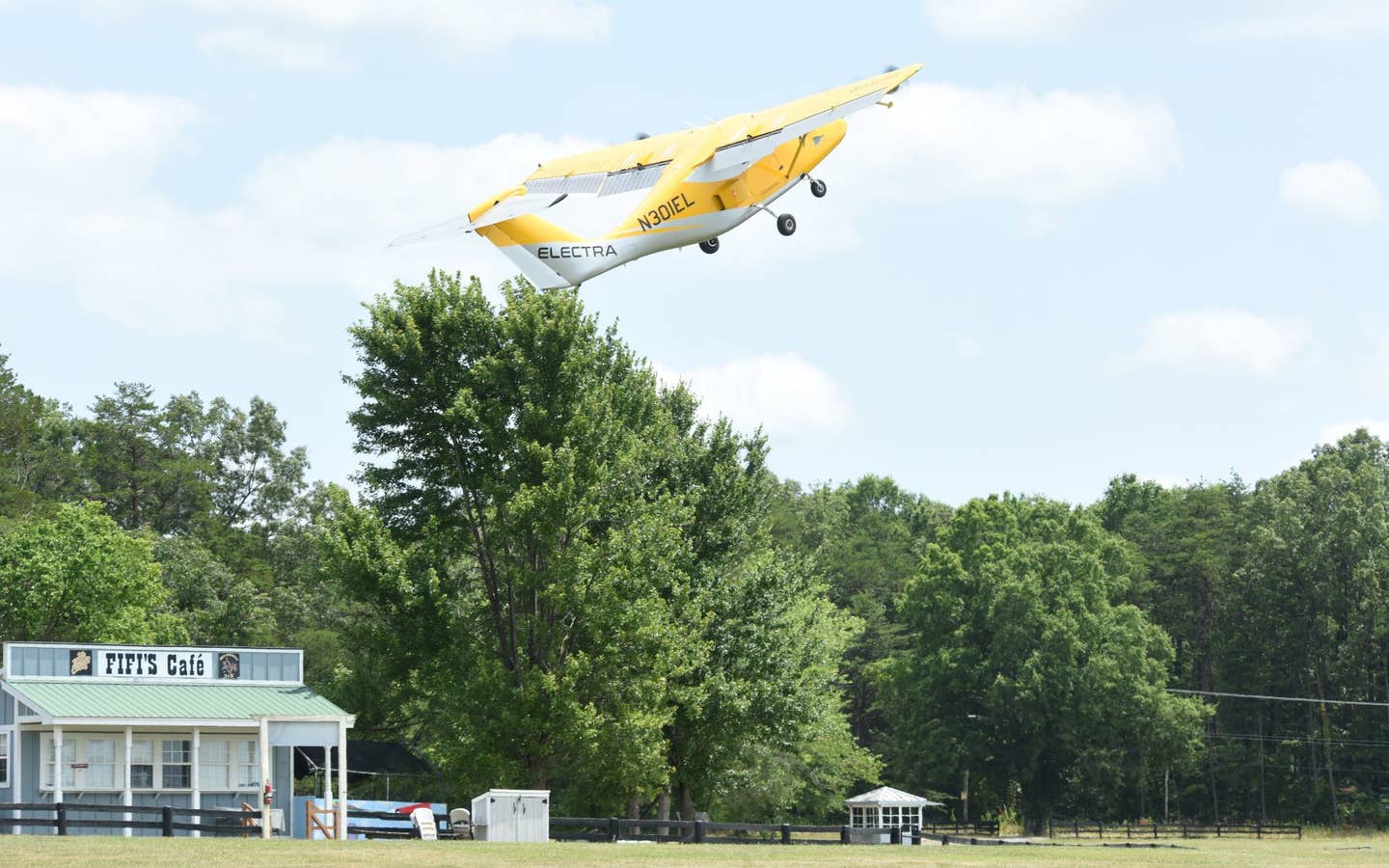Electra Completes Grass Field Takeoffs With Less Than 300 Feet
The manufacturer’s hybrid-electric short takeoff and landing (eSTOL) design goes airborne at neighborhood driving speeds through the use of blown lift propulsion.

Electra’s hybrid-electric short takeoff and landing (eSTOL) demonstrator lifts off from a grassy field. [Courtesy: Electra]
Electra, the developer of a hybrid-electric short takeoff and landing (eSTOL) aircraft capable of getting airborne from soccer field-sized spaces, this week completed a set of successful test flights—taking off from a field.
The manufacturer’s EL-2 Goldfinch, which first flew in May, got its first off-runway action when it lifted off from a grassy area smaller than 300 feet near a company facility in Manassas, Virginia.
The company has multimillion dollar contracts across the military, with the Air Force, Army, and Navy all exploring the use of eSTOL technology. The relatively cheap, runway-independent aircraft are viewed as an attractive alternative to conventional fixed wing aircraft and rotorcraft
Electra said the demonstrator completed several takeoffs and landings, climbing at a steep angle of 32 degrees. The aircraft did not require electric charging infrastructure, as many electric vertical takeoff and landing (eVTOL) air taxis do, because its propulsion unit charges the batteries in flight.
All the while, the Goldfinch produced just 55 decibels of noise, equivalent to the volume of a typical conversation, while flying overhead at 500 feet. Electra says its full-scale design, which will carry nine passengers or up to 2,500 pounds of cargo on trips up to 500 sm (434 nm), will be inaudible from the ground at its typical cruise altitude.
It seeks to certify a full-scale model under FAA Part 23 regulations by 2028.
“eSTOL technologies increase the number of available landing sites by orders of magnitude relative to traditional fixed wing aircraft while providing for higher cruise speeds, lower costs, and lower noise than vertical lift solutions,” said JP Stewart, vice president and general manager of Electra. “These first flights from a field demonstrate the beginnings of this strong capability that we will continue to develop.”
Electra’s eSTOL achieves its incredibly short runway requirement through the use of blown lift propulsion. Airflows are guided over the wing into flaps and ailerons that redirect them toward the ground, adding to thrust from the aircraft’s eight electric motors. This allows the vehicle to take off at what Electra describes as neighborhood driving speeds.
Though the manufacturer has several commercial customers lined up for its flagship design, it also views the eSTOL as ideal for airlift operations and agile combat employment, a U.S. Air Force doctrine that calls for the rapid deployment of assets to dispersed locations.
The military will be its first customer, but Electra in January surpassed 2,000 aircraft preorder sales from private partners including JSX, Bristow Group, and JetSetGo.
Like this story? We think you'll also like the Future of FLYING newsletter sent every Thursday afternoon. Sign up now.

Sign-up for newsletters & special offers!
Get the latest FLYING stories & special offers delivered directly to your inbox






